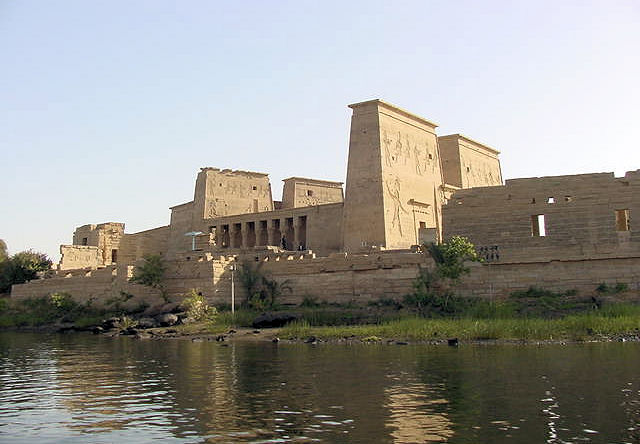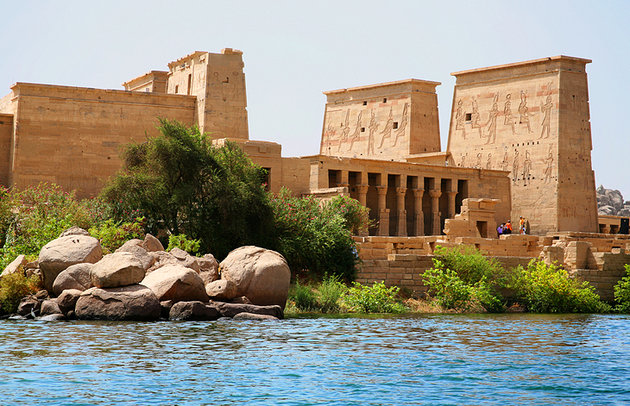Saving Philae island
Saving Philae island Egypt launched an international appeal through UNESCO.
Many projects were presented for study.
One of the most feasible was the construction of a protective dam on the western side of the island.
This would effectively cut off the island from the main flow of the river and, theoretically, let it rest in a lower-level lake of its own.

But this project was abandoned on the grounds that constant pumping would be required to maintain the low level of the lake.
Finally it was decided to dismantle the monuments and re-erect them on another, higher island, Agilkai, slightly to the northwest of Philae.
The UNESCO project to save the monuments of Philae, which was funded by the Egyptian government and the proceeds from the Tutankhamun exhibit of the 19705, presented a great challenge.
An Italian contracting company was chosen to carry out the work.
They started with the construction of a coffer dam around the island in 1977.
The water was then pumped out, and once the grayish-green blocks of the temple were exposed, the carvings and inscriptions were recorded by photo grammetry Next the temple was dissected stone by precious stone.
Forty seven thousand blocks were cleaned, treated, numbered, and stored in preparation for transportation and eventual reconstruction.

During the dismantling operations, many of the blocks were found to have come from earlier monuments and been reused, especially in the foundations of the buildings.
Besides the original kiosk of the Twenty-sixth Dynasty pharaoh Psamtik already referred to, the shrine of Amasis was found dismantled and reused in other constructions on the island. ~ ‘While these operations were underway, the Egyptian High Dam Company-which had by that time completed work on_ the dam and had equipment lying idle-blasted 450,000 cubic meters of granite off the top of Agilkai Island.
They used some of this to enlarge part of the island to resemble the shape of Philae, in order to contain_the monuments without distortion.
Once this was completed, the stones from the dismantled temples were transported to their new home.
In a record time of thirty months, the monuments of Philae were re-erected in an even better condition than before, for many of the reused or fallen blocks were reconstructed in their original positions.
In March 1980, the new ‘Island of Philae’ was declared open to the public.
The Pearl of Egypt, solid and stately, once more captures the admiration of all who see it.
A jetty and boat harbor have been constructed above the Aswan Dam, and facilities are now available to transport the daily flow of a thousand and more visitors out to this unique, and beautiful, reconstruction.


